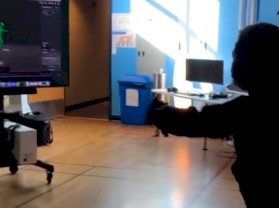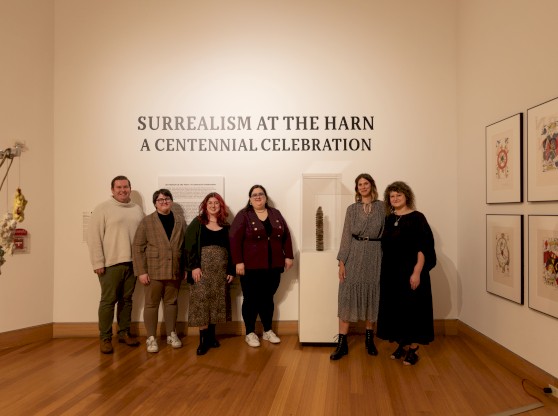With artwork shown in galleries and museums across the nation, one might assume Dennis Campay pursued a career in art since the day he was old enough to hold a pencil. The startling fact is that it was not until his late thirties that he left a career in architecture to become a full-time artist.
“My passion always was the arts, but I was very timid,” Campay said. “Once I found that art was my passion and there was nothing really else that I wanted to do, I just pursued it with a vengeance.”
From early on in his career, Campay applied techniques and materials from construction into his work.
“Sometimes I worked seven days a week in my studio. It takes a lot of hard work and commitment. You’re going to go through a lot of discouragement, and what I call ‘down time,’ where you don’t really know where you want to go or what you want to do. But I just keep pushing it, and it worked for me,” Campay said.
In 2015, Campay challenged himself with a new kind of artwork: illustrating for a children’s novel titled The Magician’s Hat, written by New England Patriots wide receiver Malcolm Mitchell. The award-winning novel launched a program called Read with Malcolm, which seeks to improve literacy and inspire children through reading by providing educational materials and engaging in school visits. The program mixes reading and drawing activities, which Campay find essential in schools.
“We have to pass it on, we have to continue it,” he said. “The arts are so valuable because they allow children to explore their imagination, think outside the box, be as creative as they can. Whenever I sign the children’s books I say ‘always read and always draw.’”
Education is something Campay is passionate about, and he tries to assist, advise and exchange ideas with artists of all ages and stages in their careers. Campay would often visit School of Art + Art History Professor Richard Heipp’s classes to share his wisdom with students. A topic Campay was always certain to address with aspiring artists was the business side of the art world, or the “yada yada of the art world” as he jokingly referred to it.
“The divide is that I have to know the business as much as I know the creative process. That’s just reality,” Campay said.
Campay explains that being a full-time artist requires an understanding of finances, as tax forms can be complicated and pricing artwork is a complex science. Campay said that many young artists become burned out by the complexity and difficulty of the business side of the art world.
“The University of Florida was one of the first and one of the few to have an art class that addressed the business part,” Campay said.
The artist has a connection to the university through his wife, Colette, who graduated from UF in 1974. Together, the couple offers UF students the opportunity to apply for the Dennis and Colette Campay Studio Art Scholarship.
“I felt that if I was going to make a lot of money, that I was going to share it with the arts,” Campay said.
After establishing the scholarship, he and his wife decided to also make a legacy gift in their estate plan.
"We wanted to expand the reach of what the scholarship could do to impact the next generation of artists,” Campay said.
Campay was one of the first artists in the United States to start making reproductions of his artwork in the form of gicleé prints.
“Not everyone could afford a Dennis Campay original, so I did these prints. I got a lot of grief from a lot of people about that, but I used some of the money I made off the prints to open the scholarship,” Campay said.
The artist challenges himself to adapt his style and try new things, while maintaining his organic and reactive approach to artmaking.
“My Achilles heel is that I like to put in too much. And I’m 68. I’ve read as artists get older, they want to put more into their work to say more,” Campay said.
To combat this tendency, the artist asks himself “how much do I have to put in it to communicate what I want to communicate?” to create new works of art. He has heard feedback that this new process is working in his favor.
In his studio, Campay typically works on six to eight canvases at a time, bouncing from one work to another experimenting with elements and seeing what works best on each canvas.
“I’ve been compared to jazz players. They’ll say ‘you’re like a jazz musician on a canvas,’ because I just kind of organically go with what’s working,” Campay said. “With creating a piece of work you do the same process over and over again to where you can’t remember what you did or how you did it because it’s so natural to your being. It’s just done.”
The artist was most recently featured in an exhibit alongside sculptor Steven Steinman at the Marietta/Cobb Museum of Art in Marietta, Georgia. The exhibit, Lost Parts and Found Narratives, was a retrospective exhibit that displayed more recent works as well as some as early as 2007.





